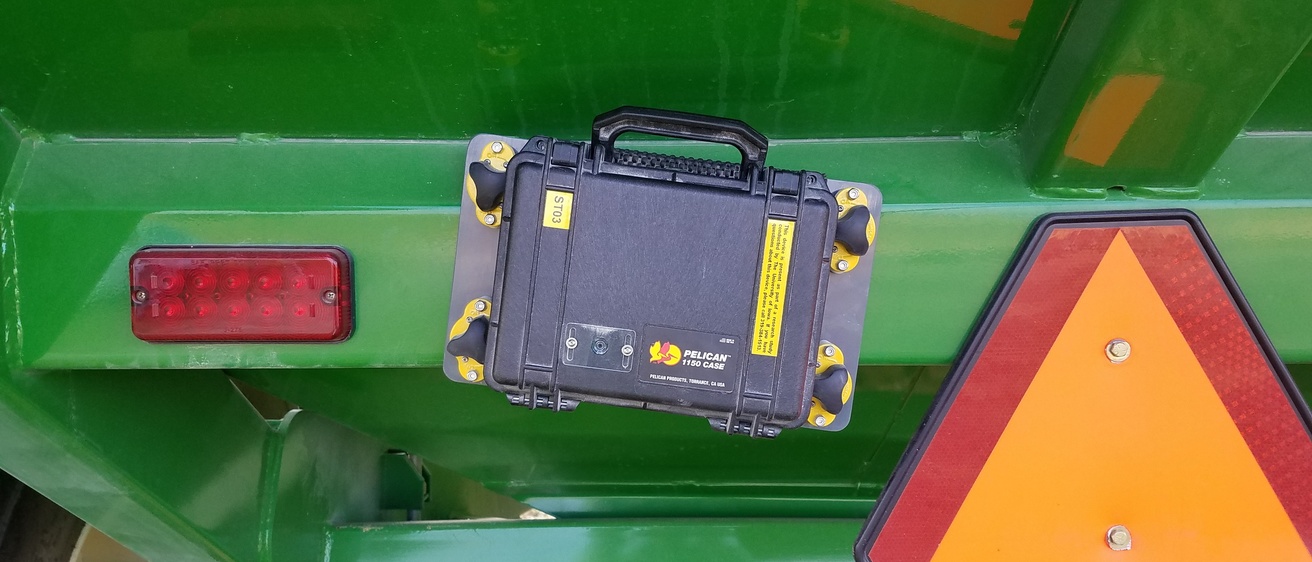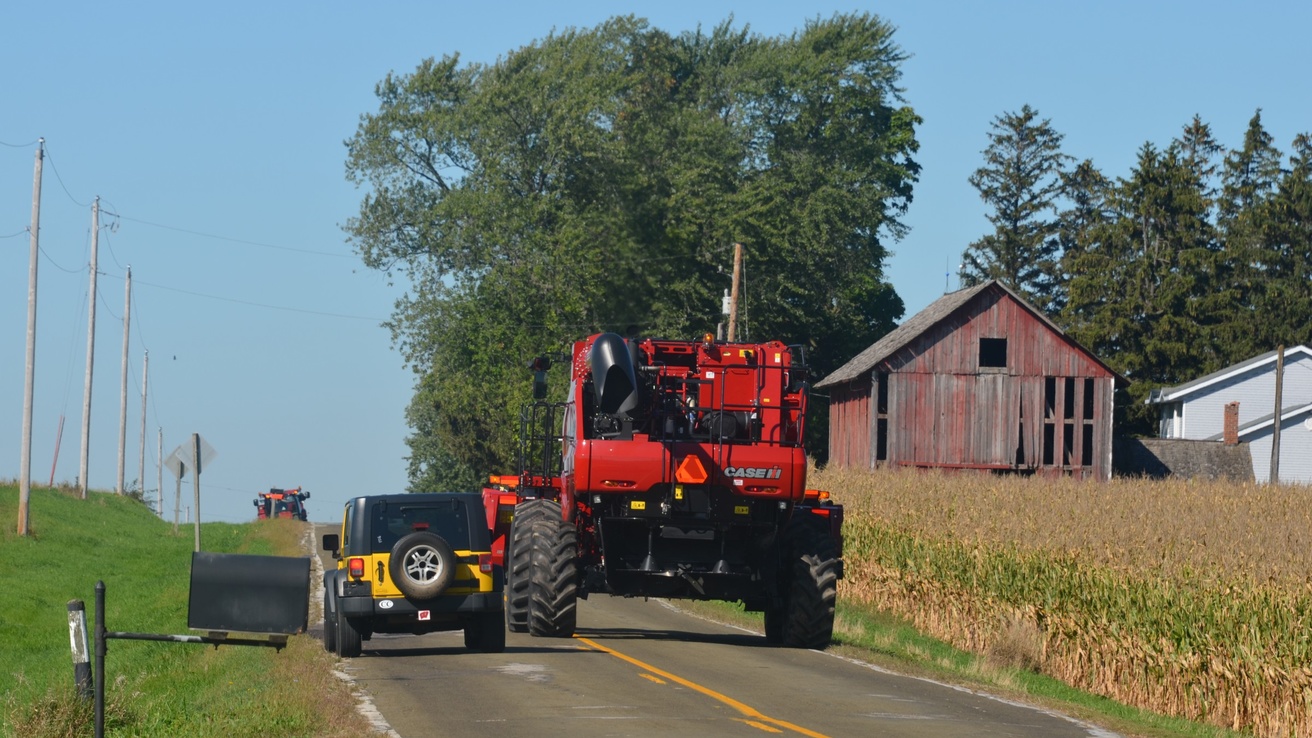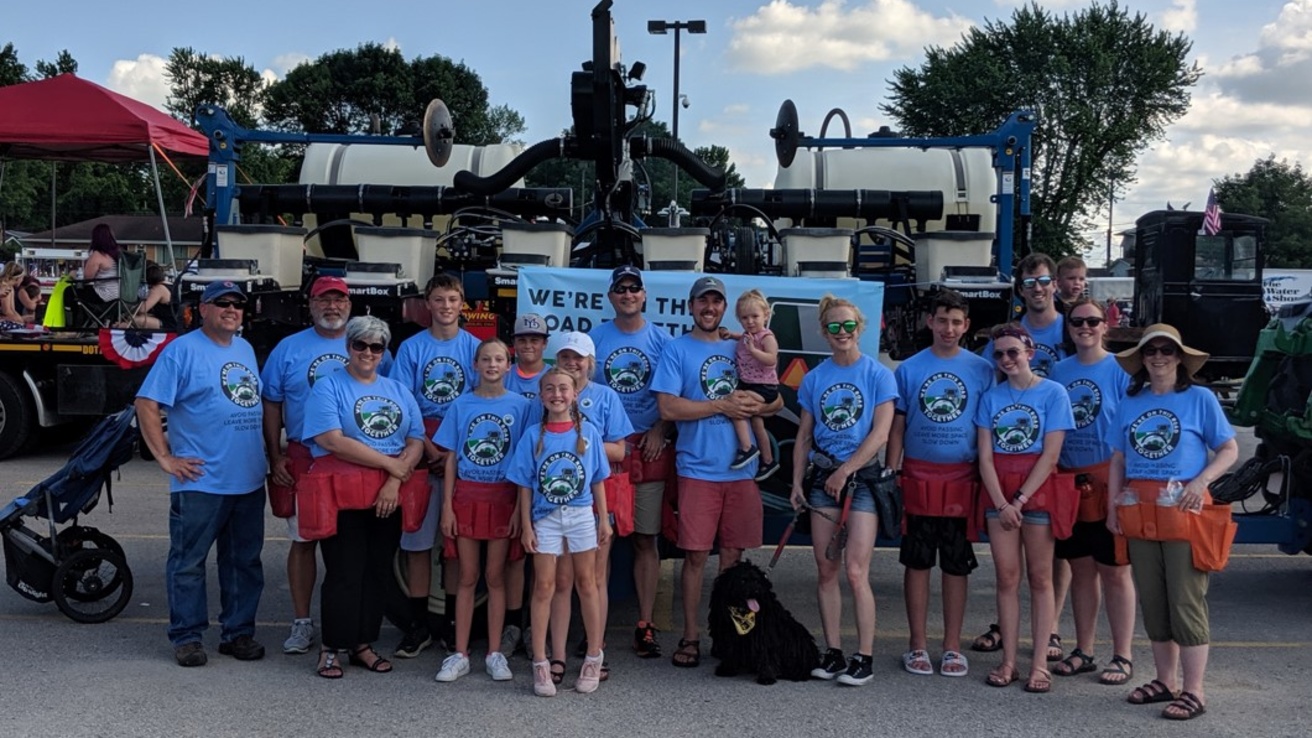We focus on the interaction between farm equipment and other driver on roadways, with an emphasis on behavior of the non-farm vehicle drivers. Transportation is the leading mechanism for agricultural-related fatality and injury, and crashes contribute significantly to this burden. These crashes are most often the fault of other vehicle drivers.
Interventions typically focus on the increasing the visibility of farm equipment using lighting and marking. Policies that establish farm vehicle lighting and marking standards are associated with lower crash rates, but interventions that focus on safer driving around farm equipment also have strong potential for impact.

spacing


for spacing


Community Campaign to Reduce Farm Vehicle Roadway Crashes
This study builds on and expands efforts from the SaferTrek project, focusing on farm vehicle-involved crash prevention strategies targeting drivers of non-farm vehicles.
Phase I
We are translating the “We’re on This Road Together” community-level rural roadway safety campaign to a Toolkit that can be implemented directly by community groups. The research team will work with Extension Educators in Iowa and Illinois to develop the Toolkit through focus groups, surveys, and pilot testing in communities.
Phase II
We will disseminate the Toolkit to Extension Educators in Indiana. Toolkit implementation and reach will be evaluated through surveys, administrative document review, and focus groups with educators. Additionally, communities will have the option of collecting pre- and post-campaign roadway data using the SaferTrek devices mounted to the rear of farm equipment to capture video recordings of driver behaviors around farm equipment.
This study is funded by the Great Plains Center for Agricultural Safety and Health.